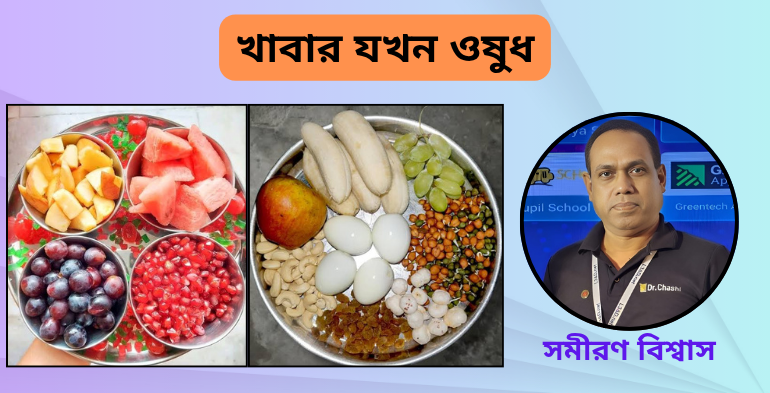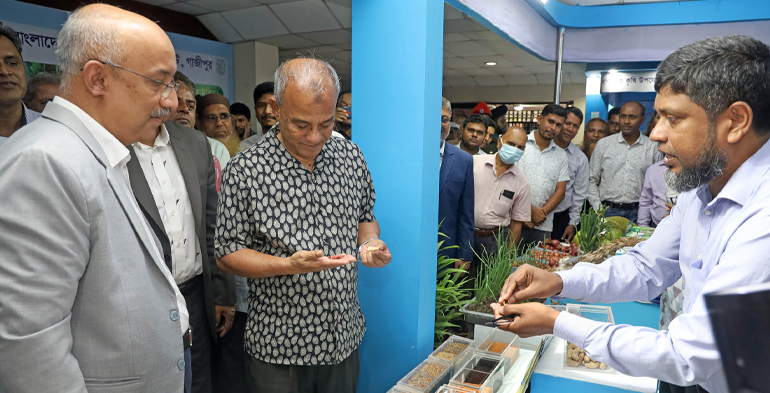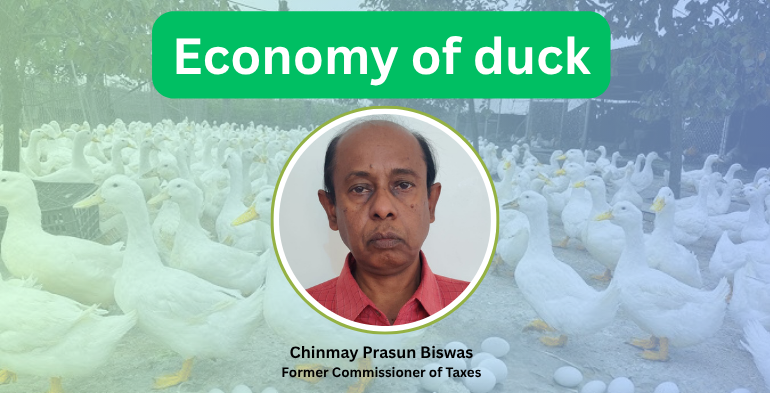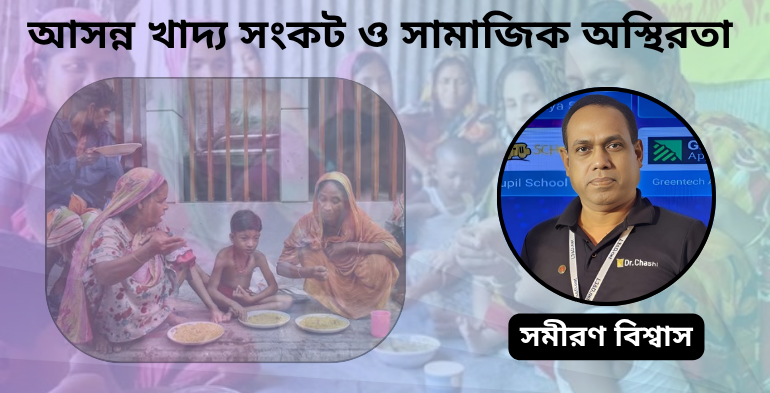- Written by Shafiul Azam
- Category: গবেষণা ফিচার

সমীরণ বিশ্বাস:খাবার শুধু পেট ভরানোর উপকরণ নয়, এটি হতে পারে রোগ প্রতিরোধের ঢাল, আরোগ্যের পথ এবং দীর্ঘজীবনের চাবিকাঠি। আধুনিক পুষ্টিবিজ্ঞান ও চিকিৎসা গবেষণা বারবার প্রমাণ করেছে যে সঠিক খাদ্যাভ্যাসই অনেক রোগের প্রতিষেধক ও প্রতিকার হতে পারে। “খাবার যখন ওষুধ” কথাটি কেবল প্রবাদ নয়, এটি আধুনিক বিজ্ঞানের স্বীকৃত ধারণা। মানবদেহের সুস্থতা ও রোগপ্রতিরোধ ক্ষমতা অনেকাংশে নির্ভর করে সুষম ও পুষ্টিকর খাদ্যের ওপর। খাবারের বিভিন্ন উপাদান, যেমন ভিটামিন, খনিজ, প্রোটিন, ফাইবার এবং অ্যান্টিঅক্সিডেন্ট শরীরের কোষ মেরামত, রোগ প্রতিরোধ ও বিপাকক্রিয়া নিয়ন্ত্রণে গুরুত্বপূর্ণ ভূমিকা রাখে। উদাহরণস্বরূপ, ভিটামিন–সি ও ই শরীরকে অক্সিডেটিভ ক্ষতি থেকে রক্ষা করে; ওমেগা–৩ ফ্যাটি অ্যাসিড হৃদরোগের ঝুঁকি কমায়; আর আঁশযুক্ত খাদ্য হজম প্রক্রিয়া ও রক্তে শর্করার ভারসাম্য বজায় রাখে। আধুনিক “নিউট্রিশনাল সায়েন্স” প্রমাণ করেছে, অনেক দীর্ঘমেয়াদি রোগ যেমন ডায়াবেটিস, উচ্চ রক্তচাপ, স্থূলতা ও ক্যান্সারের প্রাথমিক প্রতিরোধ খাদ্যের মাধ্যমেই সম্ভব। চিকিৎসা বিজ্ঞান এখন “ফাংশনাল ফুড” বা “মেডিসিনাল ফুড”-এর ওপর বিশেষ গুরুত্ব দিচ্ছে, যা শুধু শক্তি জোগায় না, বরং শরীরের রোগপ্রতিরোধ ক্ষমতা বাড়ায়। প্রাচীন গ্রিক চিকিৎসক হিপোক্রেটিসও বলেছিলেন, “Let food be thy medicine.” অর্থাৎ, সঠিক খাবারই হতে পারে শ্রেষ্ঠ ওষুধ। তাই বৈজ্ঞানিকভাবে প্রমাণিত যে, সুষম ও সচেতন খাদ্যাভ্যাসই দীর্ঘস্থায়ী সুস্থতার মূল ভিত্তি।
- Written by Shafiul Azam
- Category: গবেষণা ফিচার

কৃষিবিদ ডাঃ শাহাদাত হোসেন পারভেজ: শহীদ রাষ্ট্রপতি জিয়াউর রহমান, বীর উত্তম বাংলাদেশের এক ক্ষণজন্মা মহান ব্যক্তিত্ব। জাতির অন্যতম শ্রেষ্ঠ সন্তান জিয়াউর রহমান একজন বীর মুক্তিযোদ্ধা। মুক্তিযুদ্ধের সূচনায় জাতির চরম সঙ্কটময় মুহূর্তে কালুরঘাট বেতারকেন্দ্র থেকে স্বাধীনতার ঘোষণা দিয়ে তার রাজনৈতিক দৃশ্যপটে আগমন। এরপর রণাঙ্গনে যুদ্ধ পরিচালনা ও যুদ্ধ প্রশাসনের নীতিনির্ধারণে অসামান্য অবদান রেখে আপামর জনমানসে স্থান করে নেন এক মহানায়কের আসনে।
- Written by Shafiul Azam
- Category: গবেষণা ফিচার

এগ্রিলাইফ২৪ ডটকম: বাংলাদেশ কৃষি গবেষণা ইনস্টিটিউট (বারি)-এর “কেন্দ্রীয় গবেষণা পর্যালোচনা ও কর্মসূচি প্রণয়ন কর্মশালা-২০২৫” এর উদ্বোধন ও বিজ্ঞানীদের সাথে মতবিনিময় অনুষ্ঠান আজ বুধবার ৫ নভেম্বর ইনস্টিটিউটের কাজী বদরুদ্দোজা মিলনায়তনে অনুষ্ঠিত হয়েছে।
- Written by Shafiul Azam
- Category: গবেষণা ফিচার

Chinmay Prasun Biswas: Duck is a very familiar animal to us. It is fou available everywhere in Bangladesh. It is known as swan or goose also but duck is the common name. Etymologically, the word duck has come from old English word dūce, meaning diver, which can bend down or dive. This name was given because of its feeding behaviour and its innate ability to dive underwater for collecting food. Ducks are mainly aquatic, can live in both freshwater and saltwater.
Duck has a good place in Bengali literature. In his poem আবার আসিব ফিরে' Jeevanananda Das has written
-------------------------------------
হয়তো বা হাঁস হবো – কিশোরীর – ঘুঙুর রহিবে লাল পায়
সারাদিন কেটে যাবে কলমীর গন্ধভরা জলে ভেসে ভেসে।--------
He has written another poem named বুনো হাঁস। Novelist Samaresh Majumder has written a novel having t the same name. In a song (lyric – Gauriprasanna Majumder, music – Nachiketa Ghosh) in 1957 Hemanta Mukherjee has sung – সাদা যে ঐ স্বপ্নমাখা রাজহংসের পাখা -----। Bengalee Hindus believe that a swan is the carrier of Saraswati, the goddess of learning.
Away from these, duck is an important part of rural economy in Bangladesh. Wetlands, marshes, canals and ponds are favourite places of ducks. Duck meat is a good source of protein and iron that helps to form blood. It helps to keep body warm and to provide energy. Duck meat may be helpful to t hose who are suffering from anemia and aversion to food.
Internationally, duck meat, prepared from Peking duck, is a main menu in Chinese cuisine and in the United States. According to the United States Department of Agriculture, around 26 million ducks were consumed in the United States in 2004. Duck meat has acquired a good place in food habit of Bangladeshi.
There was a time when duck meat was only a rural food. Gradually it has been added to urban menu. In recent past duck meat was an indispensable dish in city hotels and restaurants and domestic gatherings particularly in winter. But leaving those days behind duck meat has become a food item round the year. From Blue Market to 5-star Westin duck meat is now a regular menu everywhere in Bangladesh. As a result duck economy is flourishing day by day.
According to the Department of Livestock, there were about 48.9 million ducks in the country in the 2013-14 fiscal year. In 2024-25 fiscal year the number has increased to 66 million, i.e. duck production has increased by around 28% during 11 years. The largest number of ducks is being reared in the haor areas of the country. Its commercial cultivation is increasing in other regions also.
As estimated officially, the annual market value of ducks is at least Tk. 3.5 billion. However, according to persons working in this sector, actual market is much larger. There are now more than 10,000 commercial duck farms in the country, large, medium and small. Beyond it, thousands of families rear ducks. More than 20,000 ducks are sold every day in the wholesale markets of the capital. Currently, market price of each duck is 500 to 600 taka. Dressed ducks are available at supermarkets at Tk. 500/- -- Tk. 600/- per kg in Dhaka and Tk. 380/- -- Tk. 500/- in other areas. Now, duck is not just a food item but a potential sector of the country's overall agricultural economy.
Ducks are now cultivated almost everywhere in Bangladesh. In the vast wetlands of haor area, a flock of ducks flying in air is a common sight. It is like a dream farm that mingles with nature. In the haor areas youths are becoming self-sufficient by raising ducks at low cost. Along with rice and fish, raising ducks has now opened the door to new economic possibilities. Ducks grow quickly on natural food which reduces the cost of additional feed. Open water bodies and vast crop fields of the haor have become ideal places for raising ducks. Moreover, it is creating employment and meeting demand of eggs and meat.
In the early eighties a few people established farms with 20 to 50 small and large ducks in the haor area. Later, in 1988, three persons first established a duck farm in Nikli's haor which later became widespread. Reportedly, there are more than three thousand farms in entire haor and surrounding areas and five thousand duck farms in Kishoreganj district. Duck farms have been established on the banks of every river in the haor area. Farms in haor area have been established mainly for the purpose of egg production.
Experts working on haor under the SAARC Agricultural Research Centre say that people of haor area remain practically unemployed for 6 months of the year. Duck farming is an easy way to keep them employed during this period. Government initiative is needed in this regard. Meanwhile, about 10-12 thousand people are working in duck farms in the entire haor. There is no alternative to duck farming in the haor.
Another duck farming area is Chalanbil, one of the largest wetlands in Bangladesh. Naturally, Chalanbil remains submerged for nearly five months during monsoon to the beginning of winter. Many people of this area turn unemployed. Then fishing is the only work. However, the people of Chalanbil have now found success in raising ducks in this vast water body. Besides procuring fish duck farming has now become a new lifeline for many families who once were depended only on fishing or cultivating paddy.
Duck farming is less costly in comparison to chicken. Its mortality rate is very low. Market is wide but nothing is absolute blessing. A report of AFP dt. 16-10-2025 informs that due to apprehension of bird flu 80,000 ducks have been killed in a farm near Berlin. Bangladesh is so far free from that danger but there are other problems. Though tasteful, duck meat is harmful to persons having high cholesterol, diabetes and kidney disease. Snail is the most favourite food of duck. Hundreds of people collect snails in Chalanbil, haor areas and other places. Each cage of snails is sold at Tk. 30/- -Tk. 35/-. Collecting snails has created another source of employment but this practice has raised concern. Zoologists have warned that snails act as natural purifiers of wetlands. Indiscreet killing of snails can pollute water. If natural water purification process is lost, pollution will increase. Though duck farming is profitable, we must be vigilant about the survival of other aquatic animals. Balanced approach is required so that increase of one species does not destroy another.
The writer is a former Commissioner of Taxes
- Written by Shafiul Azam
- Category: গবেষণা ফিচার

সমীরণ বিশ্বাস:বাংলাদেশে আসন্ন খাদ্য সংকট ও সমাজিক অস্থিরতা বর্তমানে এক জটিল ও সংকটপূর্ণ সময় অতিক্রম করছে। একদিকে জাতীয় নির্বাচন ঘনিয়ে আসছে, অন্যদিকে দেশের এক বিশাল জনগোষ্ঠী খাদ্য সংকট ও অপুষ্টির মুখোমুখি হতে যাচ্ছে। সরকার, ইউনিসেফ, বিশ্ব খাদ্য সংস্থা (WFP) এবং খাদ্য পরিকল্পনা ও পরিধারণ ইউনিটের যৌথ গবেষণায় উঠে এসেছে যে, দেশের ১৩টি জেলায় প্রায় ১ কোটি ৬০ লাখ মানুষ IPC Phase 3 “Crisis” পর্যায়ের খাদ্য সংকটে রয়েছে। একইসঙ্গে ১৬ লাখ শিশু তীব্র অপুষ্টির ঝুঁকিতে রয়েছে, যা দেশের ভবিষ্যৎ প্রজন্মের জন্য এক ভয়াবহ সংকেত।
- Written by Shafiul Azam
- Category: গবেষণা ফিচার

সমীরণ বিশ্বাস:মাটি ও ফসলের স্বাস্থ্য সুরক্ষায় জৈব সারের গুরুত্ব অপরিসীম। আধুনিক কৃষিতে উৎপাদন বৃদ্ধির লক্ষ্যে অতিরিক্ত রাসায়নিক সার ও কীটনাশকের ব্যবহার মাটির উর্বরতা হ্রাস করছে এবং পরিবেশের ভারসাম্য নষ্ট করছে। মাটির জীবাণু, কেঁচোসহ প্রাকৃতিক উপাদানগুলো ধ্বংস হয়ে যাচ্ছে, ফলে মাটির গুণগত মান কমে যাচ্ছে। এই পরিস্থিতিতে জৈব সার ব্যবহারই হতে পারে টেকসই কৃষির অন্যতম সমাধান। জৈব সার প্রাকৃতিক উপাদান যেমন গোবর, কম্পোস্ট, জৈব বর্জ্য ও সবুজ সার থেকে তৈরি হয়, যা মাটিতে প্রয়োজনীয় পুষ্টি সরবরাহ করে এবং মাটির গঠন উন্নত করে। এটি মাটির জৈব পদার্থের পরিমাণ বাড়িয়ে জলধারণ ক্ষমতা বৃদ্ধি করে, ফলে খরা বা অতিবৃষ্টিতেও ফসলের উৎপাদন তুলনামূলক স্থিতিশীল থাকে। একই সঙ্গে জৈব সার ব্যবহারে ফসলের গুণমান উন্নত হয় ও মানবস্বাস্থ্যের জন্য ক্ষতিকর রাসায়নিক অবশিষ্টাংশের ঝুঁকি কমে। অতএব, মাটি ও ফসলের দীর্ঘমেয়াদি স্বাস্থ্য রক্ষায় জৈব সার ব্যবহারের কোনো বিকল্প নেই। টেকসই কৃষি ও নিরাপদ খাদ্য উৎপাদনের জন্য কৃষকদের জৈব সার ব্যবহারে উৎসাহিত করা এবং প্রশিক্ষণ প্রদান এখন সময়ের দাবি।
























